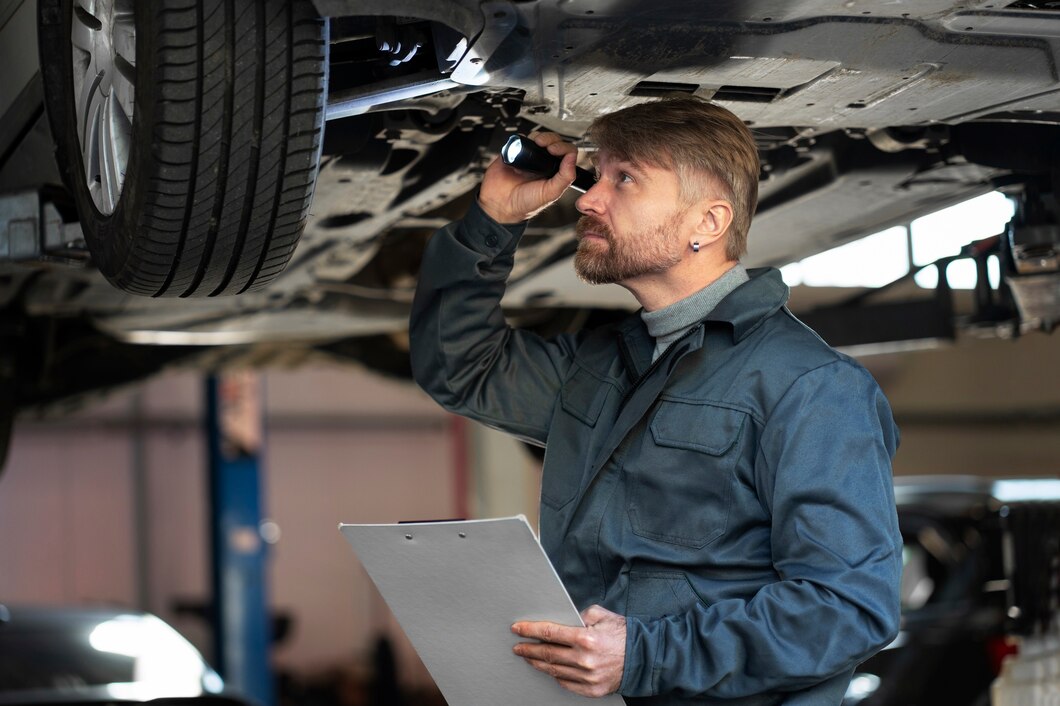Getting a car inspected is a crucial step whether you’re buying a used vehicle, ensuring safety, or complying with regulatory requirements. Here’s a detailed guide on the process:
1. Understand the Purpose of Inspection
- Safety and Compliance: Inspections verify that a vehicle meets safety and emissions standards set by local or national regulations.
- Pre-Purchase Inspection: When buying a used car, an inspection ensures transparency about its condition and potential issues.
2. Research Inspection Requirements
- Local Regulations: Check your local government’s requirements for vehicle inspections. Requirements may vary based on location and vehicle type.
- Specific Needs: Determine if your inspection needs to cover safety, emissions, or both.
3. Choose an Inspection Facility
- Authorized Centers: Select a certified inspection center recognized by your local transportation authority or regulatory body.
- Recommendations: Ask for recommendations from friends, family, or automotive forums for reputable inspection services.
4. Schedule an Appointment
- Availability: Book an appointment with the inspection facility. Plan ahead, as availability may vary depending on demand.
- Documentation: Prepare necessary documents such as vehicle registration, identification, and any previous inspection records.
5. Prepare Your Vehicle
- Cleanliness: Ensure the vehicle is clean, inside and out, as inspectors may need to access various parts.
- Accessories: Remove personal items and accessories that may obstruct inspection or access to critical components.
6. Attend the Inspection
- Accompany the Vehicle: If possible, be present during the inspection to observe and ask questions about the process.
- Ask for Details: Request explanations for any identified issues or concerns raised during the inspection.
7. Review Inspection Results
- Detailed Report: Receive a detailed inspection report outlining findings related to safety, emissions, mechanical condition, and compliance with regulatory standards.
- Recommendations: Pay attention to recommendations for repairs or maintenance needed to pass inspection or ensure vehicle safety.
8. Address Identified Issues
- Repair Estimates: Obtain estimates for necessary repairs or adjustments identified during the inspection.
- Prioritize Safety: Address safety-related issues promptly to ensure the vehicle meets required standards.
9. Final Inspection and Certification
- Reinspection: After making repairs, schedule a reinspection to verify that all identified issues have been resolved.
- Certification: Upon passing inspection, receive a certification or sticker indicating compliance with safety and/or emissions standards.
10. Keep Documentation
- Records: Maintain all inspection reports, certifications, and receipts for repairs as proof of compliance and for future reference.
- Future Compliance: Note any future inspection deadlines or requirements based on regulatory guidelines.
11. Additional Considerations
- Regular Maintenance: Keep up with regular vehicle maintenance to minimize the likelihood of issues during inspections.
- Educate Yourself: Stay informed about your vehicle’s specific inspection requirements and regulations to ensure ongoing compliance.
Getting a car inspected involves careful preparation, attention to detail, and adherence to regulatory standards. By following these steps, you can navigate the inspection process smoothly, ensuring your vehicle meets safety and compliance standards effectively.











